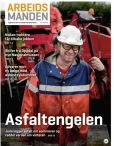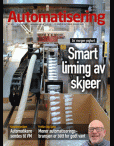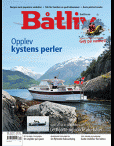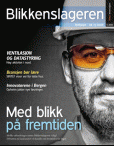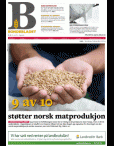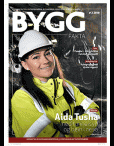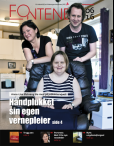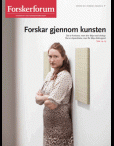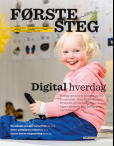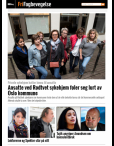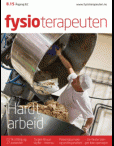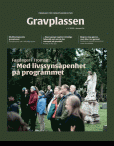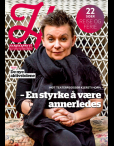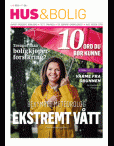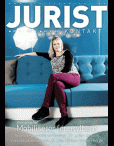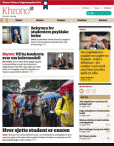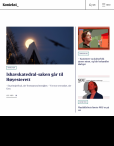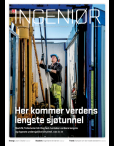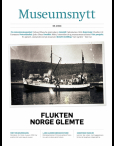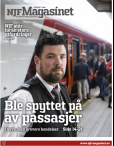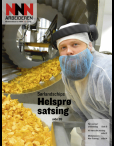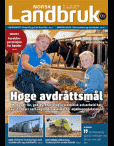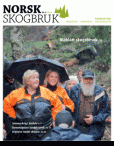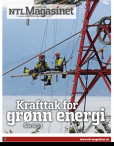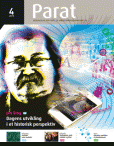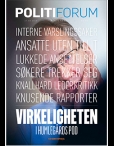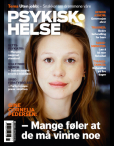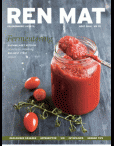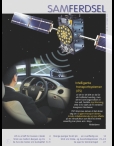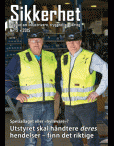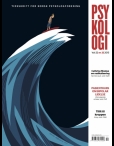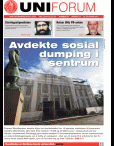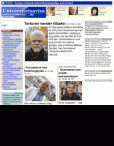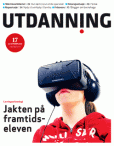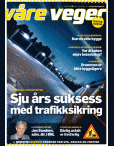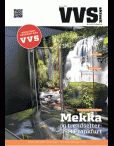Magma
03.12.2019
INTRODUCTION
Accessing finance is one of the most fundamental problems faced by start-ups. They are perceived as riskier (with good reason), they have less collateral to show, and they often have little or no history to convince investors or borrowers that their suggested business model holds potential. Start-ups are also less resourceful, meaning that merely the cost of accessing finance through traditional channels may be prohibitive. If you are based in Oslo, it is surprisingly difficult to go to Bergen and Trondheim to raise financing, as it costs time and money to find financiers, and it is also difficult for the financiers to find potential investment targets.
The last ten years have seen major innovations in the way start-ups can get financing. Cheaper computing power,1 increased storage, and large increases in communication speed have made it easier to sidestep traditional intermediaries by establishing digital platforms that connect start-ups with potential investors and borrowers. The most prominent examples of such platforms offering disintermediated alternatives to start-up financing are crowdfunding and initial coin offerings (ICOs).
ICOs went from two in 2016 to 37 in 2018 in the Nordics, while equity crowdfunding almost doubled in size.2 This decade is, however, not the first to have
1. Moore's law states that the number of transistors in a microprocessor doubles roughly every 18 months.
2. See Table 1.its revolution in terms of financing models. The 1990s brought an equally strong change in the form of venture capital financing. What makes this round different is that many of these new modes of financing are disintermediated. Crowdfunding platforms and firms using ICOs all claim to reduce the use of intermediaries, such as banks or venture capital (VC), and try to connect investors and firms directly with each other. The implicit promise in both forms is that they enable more start-ups to receive funding and hence are valuable both to the parties involved and to society at large.
With this as a point of departure, we set out to answer two main questions: First, do these new forms of start-up funding make it easier for more start-ups to receive financing? Second, does this improvement in financing lead to more success for start-ups?
To address these questions, we first give an overview of the hurdles start-ups traditionally have faced when raising financing, before giving an overview of what the disintermediated alternatives, crowdfunding and ICOs, actually are. Then, we outline benefits and issues with these platform-based models, before tying the strings together to shed light on our two research questions.
The main purpose of this paper is thus to describe these innovations and to analyse their underlying economic mechanisms. While we fully acknowledge that both these new categories of finance are very controversial, and that most countries struggle with how such platforms should be regulated, we intentionally abstract away from such issues here to focus the discussion.
MARKET FRICTIONS, CREDIT RATIONING AND THE FUNDING GAP
Why do we observe this explosion in start-up financing? In this section we will explore the difficulties surrounding start-up financing in more detail and will explain how these innovations can solve some of the issues present in current financing models.
The standard explanation for the difficulty of obtaining start-up financing is typically centred around socalled market frictions. It is self-evident that start-up investments are very risky and hence difficult to evaluate. Several types of risk are prevalent: first, general (but symmetric) uncertainty about the prospects of a project: Is the market large enough? Are the founders capable of delivering on their promises? Two other problems compound these problems. First, adverse selection: some firms are worse than others (and the entrepreneurs understand at least the quality of their own product).3 In its most extreme form adverse selection can lead to market failure in the sense that only bad products get sold in the market and that sellers of good products prefer not to enter the market. If there are only few good firms in the market, investors will have problems finding them and might not finance them or lend to them. Such a problem is called credit rationing (see Tirole, 2006).
The second problem is called moral hazard: it describes a situation where after financing is obtained the entrepreneurs might take steps that are not in the investors' best interest. To understand how moral hazard can lead to credit rationing, let us consider the following (extremely simplified) example: an entrepreneur has two projects she can choose from. One project is profitable and carries no risk. The other project breaks even overall, but pays a lot in one state of the world and nothing in the other. If the entrepreneur has enough funds to finance the project herself, she will always choose the riskless and profitable project. If, however, she needs to borrow some money from an investor the investor might refuse to lend it to her. Why? Given limited liability it can be more profitable for her to choose the second project. In that case she would get all the benefits in the better scenario but the investor would bear all the losses in the worse one.4 The above problem illustrates that firms that have a financially viable product may not receive (debt) financing because of market friction. Hence, there exists a possible funding gap for start-up projects.
Several solutions to this problem are available. Collateral is one. Offering collateral is typically not an option for start-ups, though. Another is for investors to build up expertise in financing risky projects. Instead of investors individually screening investments, banks collect money and build up expertise that helps them sort out bad deals. Also, banks are good at monitoring firms and can thus reduce moral hazard after the financing has been received. This solution is called intermediated finance.5 A criticism of the banking solution has been that banks are not natural risk takers and tend to finance only very safe firms. In addition, after the recent financial crisis banks have been forced to cut down on lending to smaller firms through more stringent regulation.
A second possible answer to this particular problem is to issue equity.6 By offering to share the proceeds of an idea with a financier the entrepreneur benefits less from exploiting the financier. From an economic perspective the basic idea of obtaining (equity) financing from (outside) investors is actually centuries (or millennia) old.7 Venture capital (VC) is a form of finance that combines these two ideas: VC is very good at screening out bad firms and offers firms equity. VC funds are supposed to collect funds from investors to invest in hi
Gå til medietThe last ten years have seen major innovations in the way start-ups can get financing. Cheaper computing power,1 increased storage, and large increases in communication speed have made it easier to sidestep traditional intermediaries by establishing digital platforms that connect start-ups with potential investors and borrowers. The most prominent examples of such platforms offering disintermediated alternatives to start-up financing are crowdfunding and initial coin offerings (ICOs).
ICOs went from two in 2016 to 37 in 2018 in the Nordics, while equity crowdfunding almost doubled in size.2 This decade is, however, not the first to have
1. Moore's law states that the number of transistors in a microprocessor doubles roughly every 18 months.
2. See Table 1.its revolution in terms of financing models. The 1990s brought an equally strong change in the form of venture capital financing. What makes this round different is that many of these new modes of financing are disintermediated. Crowdfunding platforms and firms using ICOs all claim to reduce the use of intermediaries, such as banks or venture capital (VC), and try to connect investors and firms directly with each other. The implicit promise in both forms is that they enable more start-ups to receive funding and hence are valuable both to the parties involved and to society at large.
With this as a point of departure, we set out to answer two main questions: First, do these new forms of start-up funding make it easier for more start-ups to receive financing? Second, does this improvement in financing lead to more success for start-ups?
To address these questions, we first give an overview of the hurdles start-ups traditionally have faced when raising financing, before giving an overview of what the disintermediated alternatives, crowdfunding and ICOs, actually are. Then, we outline benefits and issues with these platform-based models, before tying the strings together to shed light on our two research questions.
The main purpose of this paper is thus to describe these innovations and to analyse their underlying economic mechanisms. While we fully acknowledge that both these new categories of finance are very controversial, and that most countries struggle with how such platforms should be regulated, we intentionally abstract away from such issues here to focus the discussion.
MARKET FRICTIONS, CREDIT RATIONING AND THE FUNDING GAP
Why do we observe this explosion in start-up financing? In this section we will explore the difficulties surrounding start-up financing in more detail and will explain how these innovations can solve some of the issues present in current financing models.
The standard explanation for the difficulty of obtaining start-up financing is typically centred around socalled market frictions. It is self-evident that start-up investments are very risky and hence difficult to evaluate. Several types of risk are prevalent: first, general (but symmetric) uncertainty about the prospects of a project: Is the market large enough? Are the founders capable of delivering on their promises? Two other problems compound these problems. First, adverse selection: some firms are worse than others (and the entrepreneurs understand at least the quality of their own product).3 In its most extreme form adverse selection can lead to market failure in the sense that only bad products get sold in the market and that sellers of good products prefer not to enter the market. If there are only few good firms in the market, investors will have problems finding them and might not finance them or lend to them. Such a problem is called credit rationing (see Tirole, 2006).
The second problem is called moral hazard: it describes a situation where after financing is obtained the entrepreneurs might take steps that are not in the investors' best interest. To understand how moral hazard can lead to credit rationing, let us consider the following (extremely simplified) example: an entrepreneur has two projects she can choose from. One project is profitable and carries no risk. The other project breaks even overall, but pays a lot in one state of the world and nothing in the other. If the entrepreneur has enough funds to finance the project herself, she will always choose the riskless and profitable project. If, however, she needs to borrow some money from an investor the investor might refuse to lend it to her. Why? Given limited liability it can be more profitable for her to choose the second project. In that case she would get all the benefits in the better scenario but the investor would bear all the losses in the worse one.4 The above problem illustrates that firms that have a financially viable product may not receive (debt) financing because of market friction. Hence, there exists a possible funding gap for start-up projects.
Several solutions to this problem are available. Collateral is one. Offering collateral is typically not an option for start-ups, though. Another is for investors to build up expertise in financing risky projects. Instead of investors individually screening investments, banks collect money and build up expertise that helps them sort out bad deals. Also, banks are good at monitoring firms and can thus reduce moral hazard after the financing has been received. This solution is called intermediated finance.5 A criticism of the banking solution has been that banks are not natural risk takers and tend to finance only very safe firms. In addition, after the recent financial crisis banks have been forced to cut down on lending to smaller firms through more stringent regulation.
A second possible answer to this particular problem is to issue equity.6 By offering to share the proceeds of an idea with a financier the entrepreneur benefits less from exploiting the financier. From an economic perspective the basic idea of obtaining (equity) financing from (outside) investors is actually centuries (or millennia) old.7 Venture capital (VC) is a form of finance that combines these two ideas: VC is very good at screening out bad firms and offers firms equity. VC funds are supposed to collect funds from investors to invest in hi








